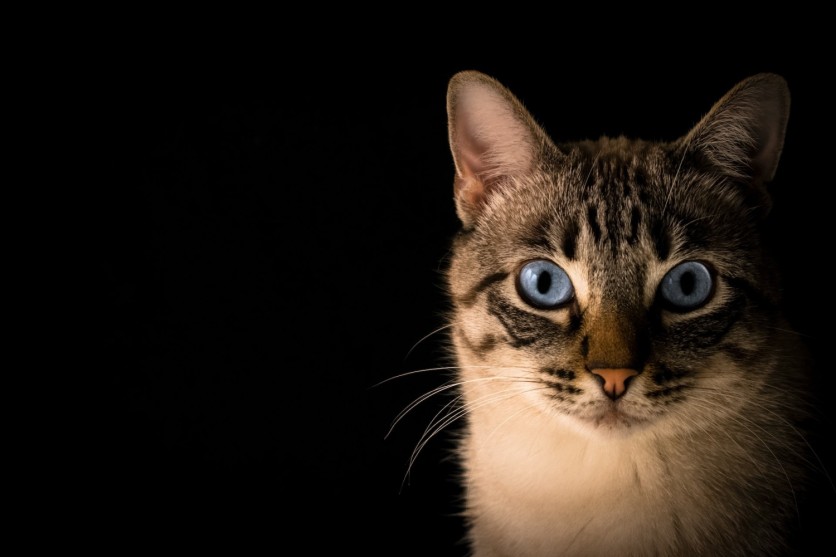
Researchers continue to seek answers as to how important is fluorescence to the animal kingdom. It turns out that even your cat at home is fluorescent under ultraviolet (UV) light.
The latest study discovered that 125 species of mammals have "apparent fluorescence." This could be the reason why some of them appear to be glowing in the dark.
Discovering the Fluorescent Mammals
A study titled "All-a-glow: spectral characteristics confirm widespread fluorescence for mammals" was posted in the Royal Society. A team of researchers from the Western Australian Museum and Curtin University, shed light on this interesting topic.
According to scientists, fluorescence is not an exception but a rule among mammals, describing it as "extremely common."
The investigation tackled an impressive spectrum of 125 mammal species, utilizing both preserved and frozen specimens found in museum collections.
Under the exposure to UV light, researchers unearthed "apparent fluorescence" in all mammal specimens studied, albeit in varying degrees.
Among the luminous stars of this discovery are some unexpected names, including domestic cats (Felis catus), polar bears, bats, mountain zebras, wombats, dwarf spinner dolphins, leopards, and Tasmanian devils.
Interestingly, fluorescent compounds were detected in an array of mammalian features, from bones, teeth, claws, and fur to feathers and skin, showcasing the multifaceted nature of this captivating phenomenon.
Revealing the Diverse Spectrum of Colors Among Mammals
The fluorescent colors displayed by these mammals are nothing short of breathtaking. According to ABC News, these include a mesmerizing palette of red, yellow, green, pink, and blue, adding a newfound dimension to our perception of these creatures.
By employing the spectrophotometer in Curtin University's School of Molecular and Life Sciences, researchers quantified the emitted light from each specimen when exposed to UV light. This technique enabled them to study the science of mammalian fluorescence more deeply.
"We were quite curious to find out about fluorescence in mammals," study's author and curator of Mammalogy at the Western Australian Museum, Kenny Travouillon said.
The Chemistry Behind the Glow
Fluorescence, it turns out, is a result of specific chemicals on the mammal's surface, such as proteins or carotenoids, absorbing UV light and subsequently emitting it at "longer and lower-energy wavelengths," per ScienceAlert. This often results in a pink, green, or blue luminescence.
Even the iconic platypus, one of Australia's most cherished species, was unveiled as a fluorescent marvel under UV light.
For years, our understanding of fluorescence in mammals had been limited to only a handful of species. This study, however, has expanded this understanding significantly by documenting fluorescence in 125 mammal species.
Notably, it revealed that the most fluorescent mammals tend to be those with predominantly white or lighter-colored fur, comprising 107 out of 125 species, which is approximately 86%.
In contrast, melanin masked fluorescence in mammals with darker fur, as exemplified by the Tasmanian devil.
The white fur of animals such as koalas, Tasmanian devils, short-beaked echidnas, southern hairy-nosed wombats, quendas, greater bilbies, and cats radiated fluorescence, while the dark hairs of zebras did not display this remarkable feature.
Fluorescence is Mostly Common in Nocturnal Animals
The study also disclosed that fluorescence is most prevalent and intense among nocturnal species, as well as those with terrestrial, arboreal, and fossorial habits. This suggests a potential correlation between mammalian behavior and their tendency to fluoresce.
While this study demonstrates that fluorescent qualities are indeed common in mammals, a lingering debate surrounds the biological function of this phenomenon. Some scientists question whether fluorescence serves any particular purpose in mammals or if it is merely a result of their surface chemistry, a topic that warrants further exploration.
As the study's authors put it, "For most fluorescent animals, there is insufficient information to evaluate."
The researchers suggest that further studies should explore non-preserved animals, including live or freshly deceased specimens, to gain a more comprehensive understanding of this mesmerizing phenomenon.
Moreover, they anticipate that the lemur, a major mammalian clade missing from their dataset, may also reveal the presence of fluorescent species due to the prevalence of white fur within the group.
Read Also: Scientists Confirm Ancient Footprints in New Mexico to Be the Oldest Sign of Humans in Americas

ⓒ 2025 TECHTIMES.com All rights reserved. Do not reproduce without permission.




